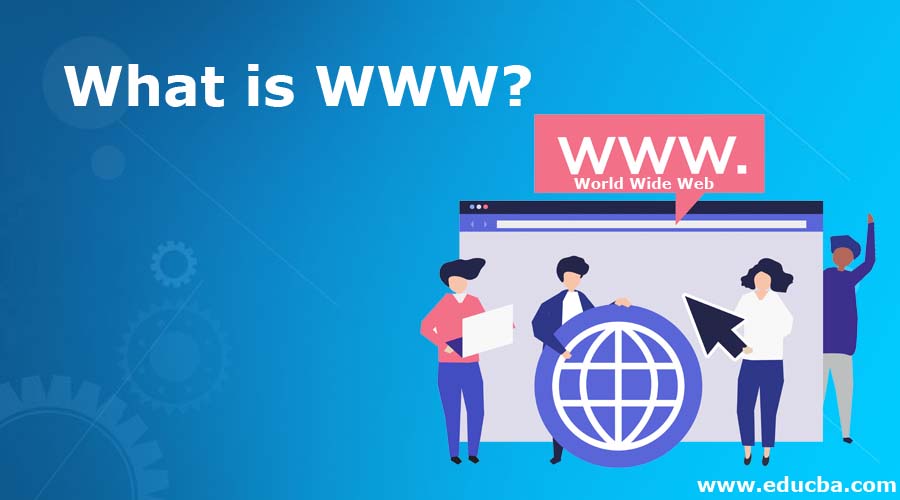Updated May 30, 2023
Definition of WWW
World Wide Web is short for WWW. The World Wide Web’s technical concept is: all Internet tools and users use the Hypertext Transmission Protocol, and the World Wide Web is the continuum of knowledge e that is open to the net. WWW also offers knowledge sharing on the Internet between computers, connecting them to a broad range of interactive multimedia services.
Timothy Berners Lee set up the World Wide Web at CERN in Geneva in 1989. As a suggestion from him, the World Wide Web came into being so that researchers could interact effectively at CERN. This became the World Wide Web finally. Small websites store all of their Webpages on one server. In contrast, large websites or organizations place their Webpages on separate servers in various countries to easily retrieve information from the next server when users in a country search their websites.
History of WWW (World Wide Web)
A British scientist, Tim Berners-Lee, created the World Wide Web in 1989 while he served at CERN. Initially, it was created to meet the need for automated information sharing among scientists worldwide to make sharing the information and results of experiments and studies easy. CERN is a network of more than 1,700 scientists from over 100 countries where Tim Berners has worked. During their research at universities and national laboratories in their home countries, these scientists spend time on the CERN website to have effective communication resources to share knowledge. At that time, people had access to the Internet and Hypertext, but nobody contemplated how to connect or exchange documents through the Internet.
How Does World Wide Web Work?
We now understand that WWW is an internet-linked set of websites for searching and sharing information. Now, let’s see what it’s like!
When requested by the users, the servers store and transfer web pages or information to the network computers of users. A web server is a software system that guides web pages users request. The client is the machine of the user requesting documents from a server. The browser built on the user’s computer permits users to access their found documents. Web servers hold all the websites. Much like someone lives on rent in a home, a website takes up and stays stored on a computer. The site owner pays the hosting price for the same domain and hosts the server while the user requests their web pages. The WWW starts working when you open your browser and enter a URL in the address bar or check Google.
World Wide Web and Internet
Many people combine “Net” and “World Wide Web.” We think that they’re the same, but they aren’t. The Internet is entirely unlike WWW. It is a global network of computers, tablets, laptops, etc. It helps users to send e-mails and chat online to other users. For instance, you use the Internet if you send an e-mail or speak to someone online. However, you use the World Wide Web, a network of servers across the internet, when you have opened a Website like google.com for details. When you request a website from your device through a browser, the server sends it to your browser. Your computer is called the web browser client and asks for the information that it wants from the other computer (server).
Hypertext Transfer Protocol:
The application-level protocol allows WWW to operate seamlessly and efficiently with the HyperText Transfer Protocol. It is based on a model client-server. The user is a web browser interacting with the web server running the website. The protocol defines the encoding and transmission of messages and instructs the Web server and the user on responding to different commands. If you insert a URL into your browser, an HTTP command is forwarded to the web server, and the requested link is transmitted. When we open a site using a browser, we open a link to the server and submit an order to the website using HTTP. HTTP is transmitted to the server via TCP / IP. The server processes the client’s application and sends a response, closing the connection. The client then retrieves the server information for the user.
Recommended Articles
This is a guide to What is WWW? Here we discuss the introduction, history, working, and world wide web and Internet. You may also have a look at the following articles to learn more –

